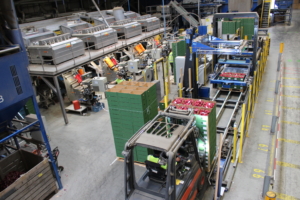
In this newsletter, Wim Waterman discusses the current developments in the global onion market with Michel Veltman. Sales manager Michel is now working for three years at Waterman Onions and is responsible for the accounts in western- and eastern- Europe. This time Michel will give an extra update about the European onion market.
“It’s been a controversial year.” Wim begins. “Demand is still lagging compared to previous years. The sluggish demand is evident in the Asian market, where in previous years we were able to sell large volumes to the Philippines, among others, we are now too pricey to compete with the Chinese onions.” This year, it is evident what the role is of the Dutch onion on the world market, namely the hole filler. If local harvests are sufficient, it isn’t easy to compete. All eyes are therefore focused on the second half of the season.
Expected bustle in the European onion market
Whereas in previous years, the transition from overseas exports to European exports only took place after the turn of the year, Michel expects the crowds to increase sooner due to higher demand, mainly from southern and eastern Europe. “You notice that most yield problems have occurred in these regions.” The question that arises from this will mostly be about size and colour. “Additionally, large volumes are now missing in Ukraine because war is actively being waged in the production areas. These volumes will have to be accommodated within Europe. Poland can now meet the demand, but this could offer opportunities for the Dutch onion in the longer term.”
Optimistic market developments
Wim is also optimistic about future market developments. “What we do less in volumes now, we can sell more in Europe in the future.” Still, Wim remains cautious about making predictions about the coming months. “Obviously, we’ve had an impactful growing season, and this can have major consequences for the product in storage. The quality is questionable, and it also decreases in storage.” And, of course, the harvest estimates within Europe have yet to be announced, and many questions still need to be answered. “The new year will show how the harvests in the southern hemisphere will go. The first harvests are already expected in December.”
Come in contact with our Sales managers.

Henri Hendrikse

Rudie Ensing




